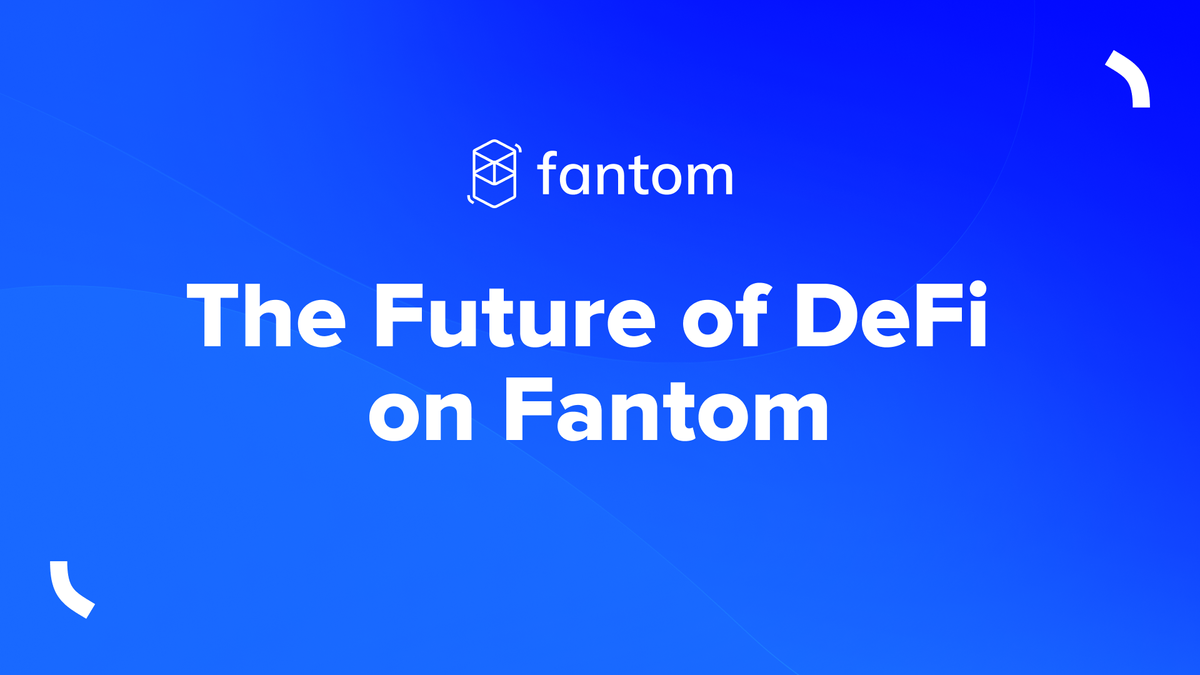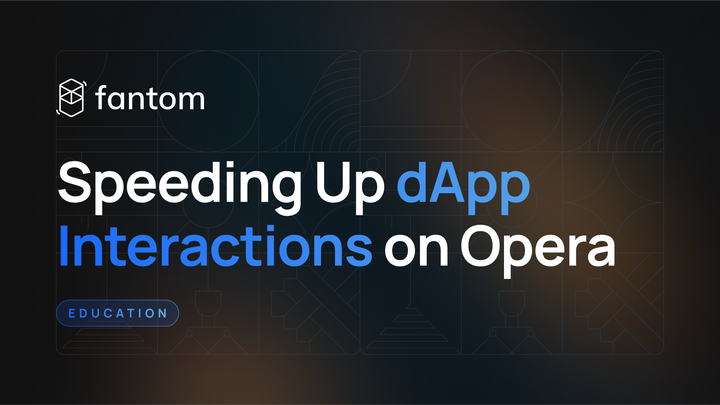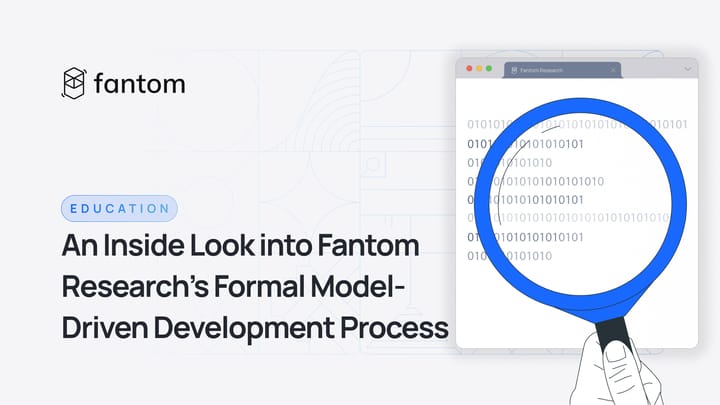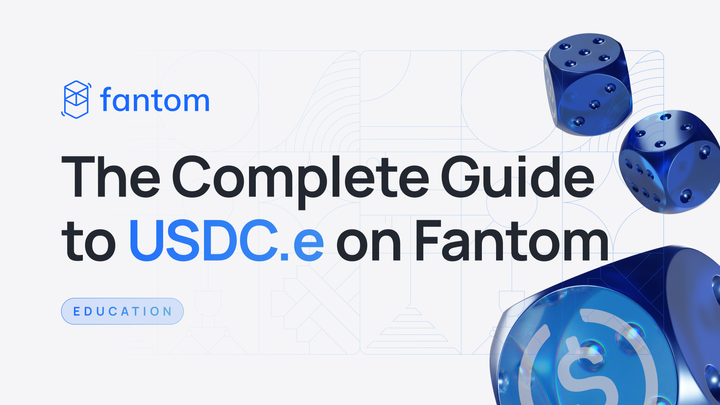The Future of DeFi on Fantom

Come bull or bear market, Fantom DeFi remains a great space of innovation, collaboration, and community. We’re both proud that Fantom has successfully attracted the best and brightest developers and humbled by their impactful contributions to the ecosystem.
Here, some of the builders and teams behind the most prominent DeFi projects in the Fantom ecosystem share their thoughts on the future of permissionless, open, blockchain-based finance.
1) Where do you think DeFi is going? What are your favorite innovations currently happening in the space?
Justin, Byte Masons
I think DeFi at the protocol level will continue to pursue capital efficiently relentlessly, and I believe dApps will continue building layers of abstraction. Teams will improve at economic modeling, and more data will become available/accessible to drive more intelligent decision-making.
Geist Finance
As DeFi matures, we will see more regulated products on the markets catered toward institutional investors. These products will likely bring more liquidity from established financial systems on-chain but will be closed off to non-validated users.
While regulated financial decentralized products will grow in the near future, we still believe there is room for traditional DeFi applications to grow and flourish. A big reason for that is the ease of accessibility and permissionless nature of more traditional DeFi applications like Geist. We are a big proponent of being permissionless and believe that anyone should have access to a money market without needing to go through KYC or credit checks.
SpiritSwap
We see DeFi as a catalyst to separate state from finance in the traditional sense; this empowers people to take a higher level of custody over their assets and opens up a plethora of earning opportunities that aren't currently available in TradFi.
Regarding the direction of DeFi, we feel like DeFi 2.0 is currently more of a buzzword ‒ its landscape and potential applications are still being mapped out. A huge gap to fill right now is securing sustainable sourcing of liquidity rather than acquiring mercenary capital, which is the approach currently encompassed in DeFi as we know it.
Many protocols have an expiry date on emissions, so this runway can only last so long. This said, with pressure, you create diamonds. As protocols seek more sustainable approaches to liquidity provision, we feel this will lead to the discovery of layers of additional functionality that can be built into DeFi, thus adding more opportunities and choices for the end-user.
Our favorite innovations currently revolve around ecosystem structure that creates positive feedback loops, which are mechanisms we are building into SpiritSwap V2. With careful modeling and surveying to discover the ecosystem's needs, we want to ensure that SpiritSwap benefits inSPIRIT holders and the entire ecosystem at large, other protocols included. Once solid ecosystem incentives are in place, the community and protocols are in an excellent position to focus on building product layers that complement one another.
OwenP, SpookySwap
DeFi is going through a rough spot currently. It is going up against the headwinds of a bear market and the ever-present specter of regulation. We experienced the failure of edge cases as algorithmic stablecoins. I think the market will flush out projects that can only exist in a bull market, ultimately making for a healthier DeFi space.
With that said, I am excited about specific innovations in the space, such as those using NFTs to represent real-world goods and projects that are building easily deployed bots for the average user.
Justin Silver/Doublesharp, Fantom community developer
DeFi will continue to be a market disruptor in ways that are hard to predict, but I see additional TradFi verticals coming to DeFi. More regulation will likely be coming soon too. While it is sure to add restrictions, I am optimistic it will result in a safer space for users and foster innovation from developers by giving them a known framework to operate within. As with most software, the protocols and strategies will become more complex as time progresses.
2) From a developer perspective, what is the biggest challenge facing DeFi adoption today?
Justin, Byte Masons
UX in Web3 sucks broadly and within every domain. Developers lack good tooling, technical designers lack good data sources, and UI is obtuse and difficult to grok for the everyday user. MEV, security, education, and tooling all need a ton of work to be acceptable to the average person. Many people are working on all these problems and more, but we’ve got a long way to go nonetheless.
Geist Finance
Government institutions will have difficulty regulating DeFi applications, so they will be looking to take it out on founders and developers. We have considered this while designing Geist and therefore have opted to create a more reliable protocol with minimal governance that reduces the chance of Geist getting shut down. This is also one of the reasons why we’re anonymous.
SpiritSwap
The learning curve to using dApps is high, and the amount of protection new investors have in the space is zero. No guidance or hand-holding at all. When you buy a stock, you are confident the business isn't fake, but when you buy a DeFi protocol token, you have no idea if this is the case. Some say crypto regulation may solve this. We think it could solve this, but it must be done delicately.
Security and education are key requirements to break down this barrier to entry.
OwenP, SpookySwap
The biggest challenge facing DeFi adoption is centralization. Users need to become more familiar with what is and isn't centralized in order to force protocols to make their products permissionless and decentralized. Many of the issues in the space result from keys of control being held by a small number of people. This adds levels of risk that can’t be accounted for in an audit.
Justin Silver/Doublesharp, Fantom community developer
The biggest challenge facing DeFi adoption today is the same challenge faced by most of the crypto space - the user experience. Typically one thinks of UX as paired with UI, and while DeFi UIs can continue to be polished, the real user experience goes far beyond that.
Improvements have been made, but more is still needed across the space for mass adoption ‒ easy fiat onboarding, secure (and intuitive) crypto wallets, performance improvements, threat mitigation… and so on. We’ve made significant progress given how nascent blockchains are, with chains like Fantom giving users sub-second block times and fast finality, and this makes me optimistic.
3) What Fantom DeFi projects are you keeping an eye on and why?
Justin, Byte Masons
I’m keeping a close eye on Granary.Finance, Sturdy.Finance, Stader, and Beethoven-X. I think they’re pushing the limits of DeFi at the protocol level, and I am excited to see where they go.
Geist Finance
While we optimize our protocol to be capital efficient, we are also exploring ways to optimize and automate our developer operations. One of the projects helping us is Gelato Network. We have been working with Gelato to reduce DevOps management and are exploring new functionalities for our users.
SpiritSwap
Liquid Driver: For us, this is a no-brainer. Dr. Liquid has made his position quite clear. LQDR intends to take a convex approach to ALL governance-oriented protocols within the ecosystem. If users want a passive, hands-off approach to investing in the Fantom ecosystem, then LQDR is a logical choice as their token acts as a proxy-type approach to an index of bluechip Fantom natives
SpiritSwap: We’re biased, obviously; however, knowing what's coming, we're naturally bullish on ourselves. We have spent months surveying, researching, and understanding what gaps need filling in the DeFi space. Our approach to curating the best of all beneficial DeFi concepts is what we see as a catalyst to eventually put us in a “top dog” position.
The layers of protocol mechanics we have built into our V2 model complement each other and establish a positive feedback loop between liquidity attraction, volume, reward incentives for the community, and, most importantly, giving back to the protocols that support our ecosystem.
We see this positive feedback loop as an excellent foundation to bolster further development opportunities on Fantom and put SpiritSwap in a good position to establish long-lasting and fruitful partnerships with other ecosystem stakeholders.
Robovault: Robovault is incredibly innovative, security conscious, and is working on developing automated investment strategies at a very profitable rate for single assets. We feel this team doesn't get enough credit or recognition. The multi-chain vault strategies that they look to deploy could help bring a lot of capital from other chains to Fantom by way of profits from these MCVs.
They are also working on a separate project (Dojima) to fill many market gaps in DeFi for lending, borrowing, financial derivatives & insurance. Having put and call options in place could put Fantom in a better position to handle on-chain liquidations, which has been a poignant and pertinent topic.
While this team is taking an admirable “slow and steady” approach towards development, we see them adding immense value to the ecosystem this year. They are smart, diligent, security conscious, and above all, take a collaborative approach towards developing beneficial product layers. We would like to see more of this caliber of developer on Fantom.
OwenP, SpookySwap
A long list of projects is coming to Fantom, DarkCrypto, Warp, and Tortle Ninja, to name a few. I am especially keen on seeing what Tortle Ninja is developing; their project will enable the average user to control the kinds of bots that only whales and coders can currently access.
Justin Silver/Doublesharp, Fantom community developer
I am particularly interested to see the use of NFTs being applied to the DeFi space ‒ this includes Byte Mason’s upcoming Reliquary protocol as well as Revest Finance’s fNFTs and their work with Liquid Driver (and other veCRV-based tokens). I’m also a fan of Beethoven X, based on the work they have released and my interactions with the team. Liquid staking is also of interest to me, and I see Stader Finance as a leader in that area.
Conclusion
The builders surveyed here offer valuable perspectives on the current state of DeFi, where blockchain-backed finance is going, and what needs to happen to ensure future success — focusing on education and sustainable practices that are as good for the ecosystem as for individual projects remains critical. Even as the projects building on Fantom diversify, we remain supremely confident that Fantom DeFi is growing and only getting stronger.
Engage with:
Byte Masons | Geist Finance | SpiritSwap | SpookySwap | Doublesharp Github



